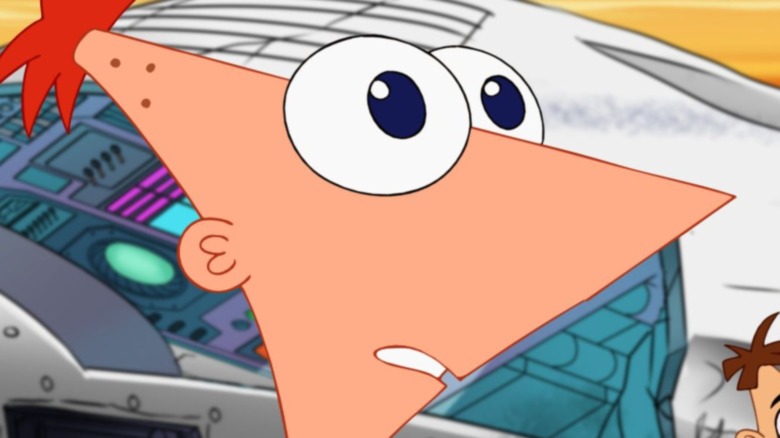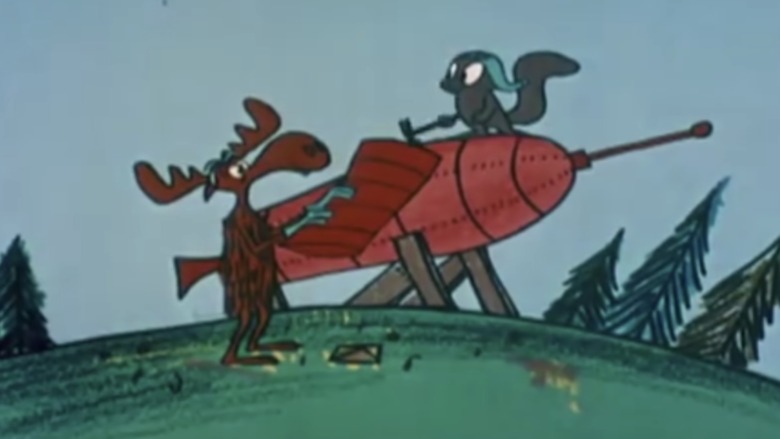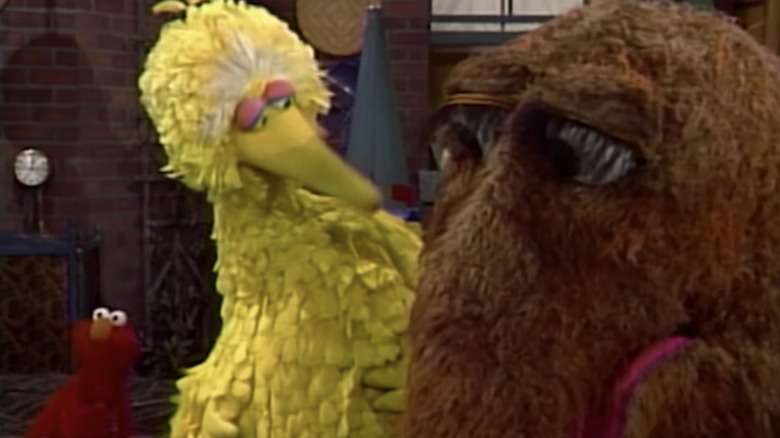The Two Vastly Different TV Shows That Inspired Phineas And Ferb
"Phineas and Ferb," the animated series that ran on Disney XD and Disney Channel from 2007-2015, is a delightfully creative cartoon about two boys, Phineas Flynn and his British-accented stepbrother Ferb Fletcher, who spend summer afternoons creating imaginative, giant-scale projects that cause their sister, Candace, to tear her hair out in frustration that she can't bust them for their rule-breaking behavior. It's all outlined in that catchy theme song, which goes, "Like maybe building a rocket or fighting a mummy or climbing up the Eiffel Tower, discovering something that doesn't exist, or giving a monkey a shower." (Admit it, you sang along.) And that's just the tip of the iceberg as far as their summer adventures in the Tri-State Area go.
But that's not all there is to the show. See, the boys also have a pet platypus, named Perry, who's a spy. In almost every episode, Perry goes off to fight his arch-nemesis, Dr. Heinz Doofenshmirtz, who's latest sinister "-inator" machine will probably make Phineas and Ferb's most recent invention disappear somehow, closing the episode neatly. It's a fun formula which worked well for almost 200 episodes of the series. And it turns out, "Phineas and Ferb" was influenced by two different classic TV shows from the past. It all makes sense when you think about it.
Phineas and Ferb were inspired by Rocky and Bullwinkle
The plots of "Phineas and Ferb," according to co-creator and executive producer Dan Povenmire, are inspired by Povenmire's experiences as a child, growing up in 1970s' Mobile, Ala. with a mother always trying to get her son to do creative things rather than watch TV during the summertime. And a lot of the humor comes from Warner Bros. cartoons, such as the ones with Bugs Bunny and Daffy Duck, according to him and his co-creator, Jeff "Swampy" Marsh.
But the two, who both worked for "The Simpsons" and on "Rocko's Modern Life" prior to bringing "Phineas and Ferb" to the small screen, have said in the past that the show is also inspired by "The Rocky and Bullwinkle Show." That animated series featuring the adventures of a moose and a squirrel aired under several different names from 1959 to 1964, but had a much longer life afterward, in syndication. It's considered a television touchstone, as A.V. Club has noted, and an all-around great show — so no wonder it's been influential.
The two animators credited the classic cartoon's format for informing the rather strict formula of each 11-minute "Phineas and Ferb" story (there are two in each 22-minute episode). Povenmire said on Piper's Picks TV, "We both had a big love for a show called 'Rocky & Bullwinkle' when we were really young ... and it was done sort of as an anthology in that there were several different stories going on at once, so we wanted to create a show that would have several stories going on at once, but they would all connect at the end."
Believe it or not, the show was also inspired by Sesame Street
And apparently, that's where the second show comes in. You might not have guessed this one: it features muppets, catchy tunes about a rubber ducky — and an educational format designed to teach kids their letters, numbers, and even some Spanish. Povenmire told Slate, "The formula really came from Snuffleupagus on 'Sesame Street,' and how Big Bird had this big, furry, mastodon-type character that only he would see, and then he would, like, go to try to find other people to get them to bring them back and show them the Snuffleupagus, and then the Snuffleupagus would always ..."
Well, if you ever saw "Sesame Street" in the 1970s you can finish the sentence from there: Snuffleupagus would always disappear just in time, making everyone think that he was Big Bird's imaginary friend. As this relates to "Phineas and Ferb," it's all about foiling Candace's daily attempts to tell her mother what her bratty bros have been up to. In the same way that Big Bird could never get other people to see Snuffalupagus (well, until they could) Candace's attempts to tattle never quite work out. The destruction of Doofenschmirt's latest "-inator" by Secret Agent Perry the Platypus always seems to make short work of Phineas and Ferb's latest invention, causing it to disappear without a trace, and often while Candace is off fetching their mom so she can bust her brothers. And that, according to "Phineas and Ferb"'s creators, is how the show wraps up so neatly at the end of each episode.


